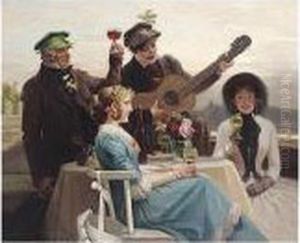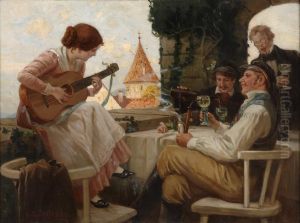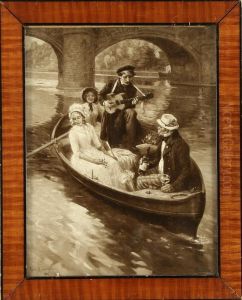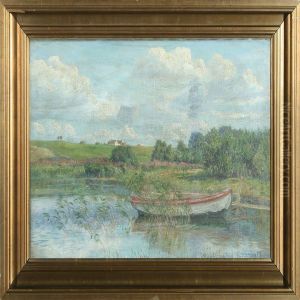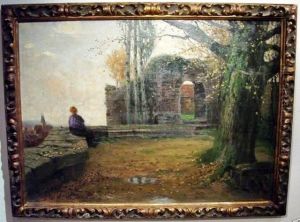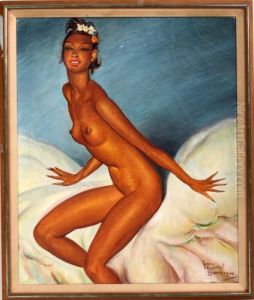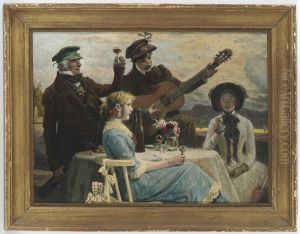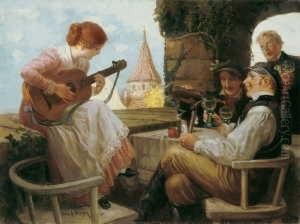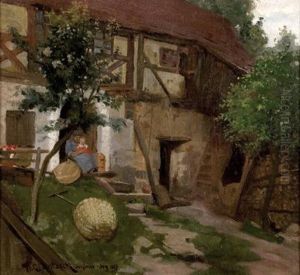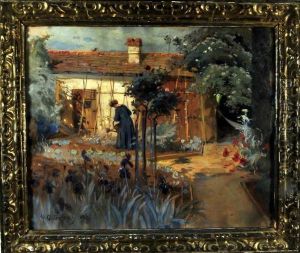Hans Gabriel Jentzsch Paintings
Hans Gabriel Jentzsch was a German artist known primarily for his work as a painter and graphic artist. Born on December 29, 1869, in Weimar, Germany, Jentzsch grew up in an environment rich in cultural heritage, as Weimar was a hub for literature, music, and the arts during the late 19th century. His early life was immersed in this creative atmosphere, which undoubtedly influenced his decision to pursue a career in the arts.
Jentzsch studied at the Grand Ducal Saxon Art School in Weimar, where he honed his skills in painting and graphic arts. He was particularly recognized for his skill in etching, a form of printmaking that involves using acid to cut into the unprotected parts of a metal surface to create a design in the metal. His etchings often depicted landscapes, city views, and architectural subjects, reflecting a keen interest in his surroundings and a meticulous attention to detail.
Throughout his career, Jentzsch exhibited his works in various shows and was involved with artist societies, which helped him to establish a reputation as a skilled etcher and painter. His style was influenced by the prevailing artistic movements of his time, including Impressionism and Jugendstil, the German version of Art Nouveau. Despite the changing art movements, Jentzsch remained dedicated to his own aesthetic, which was characterized by a blend of traditional techniques and more contemporary motifs.
As the political landscape in Germany shifted with the rise of the Nazi regime, many artists faced challenges, including restrictions on artistic expression and persecution. Jentzsch's later years were marked by these difficult circumstances, which impacted the artistic community in Germany profoundly. Nonetheless, he continued to work and contribute to the German art scene until his death.
Hans Gabriel Jentzsch passed away on March 11, 1941, in Weimar. His legacy is preserved through his body of work, which remains a testament to his skills as an etcher and painter, and his commitment to his craft in the face of adversity. His contributions to the art world during a tumultuous period in history are still recognized by art historians and enthusiasts today.
